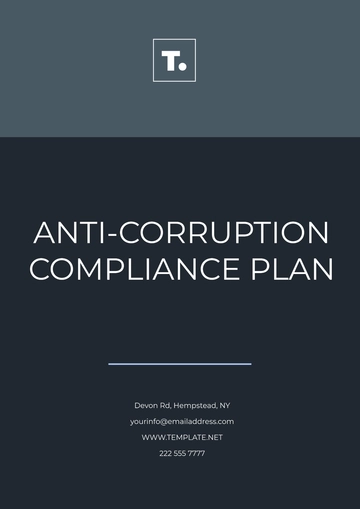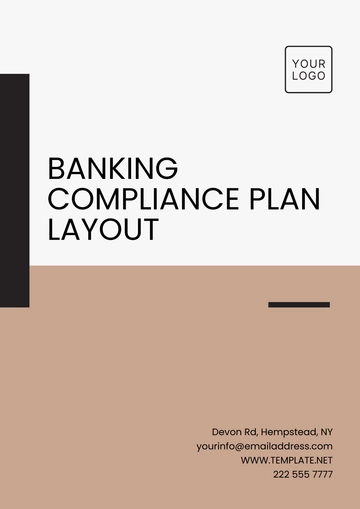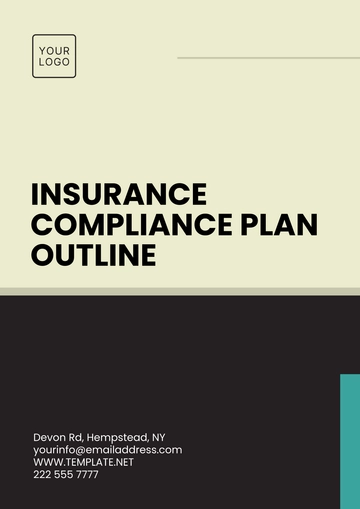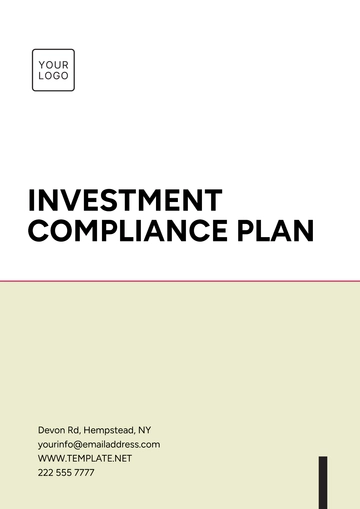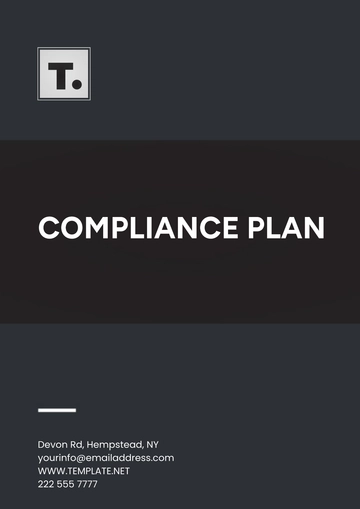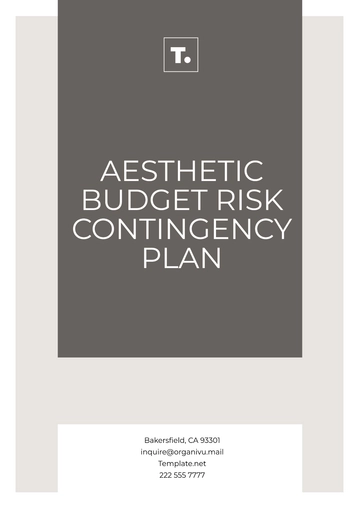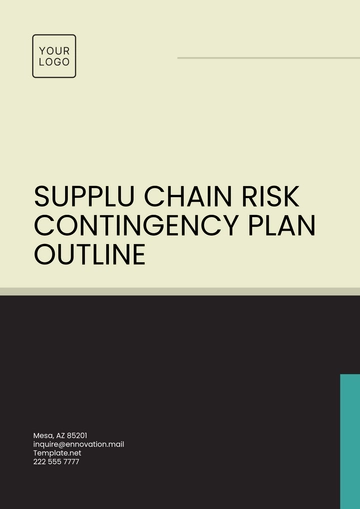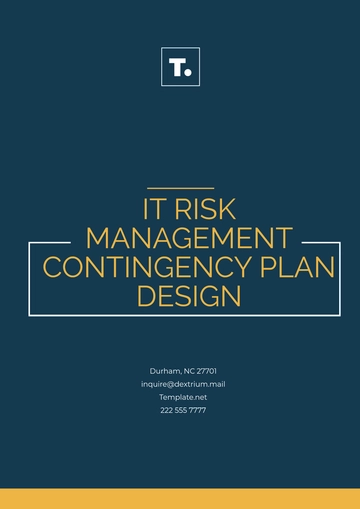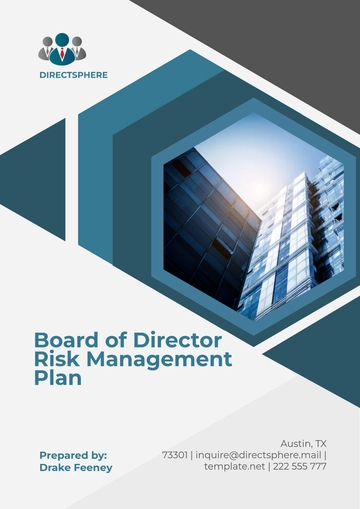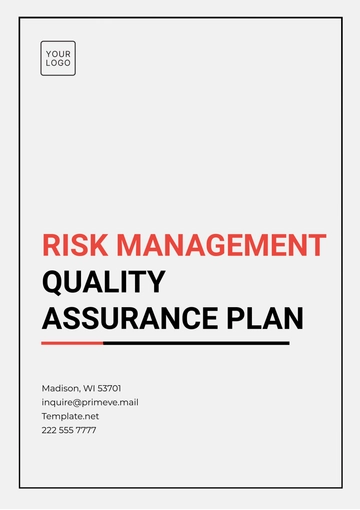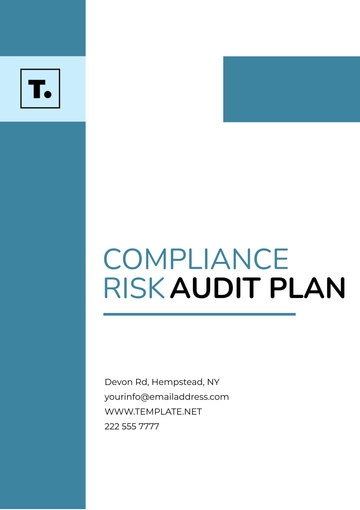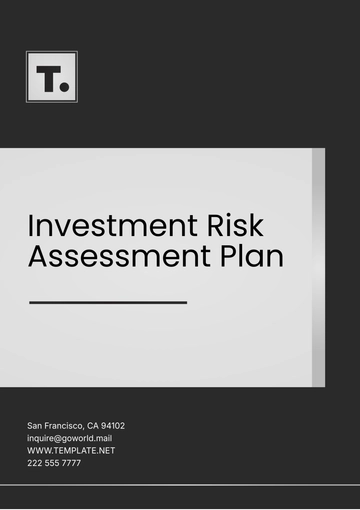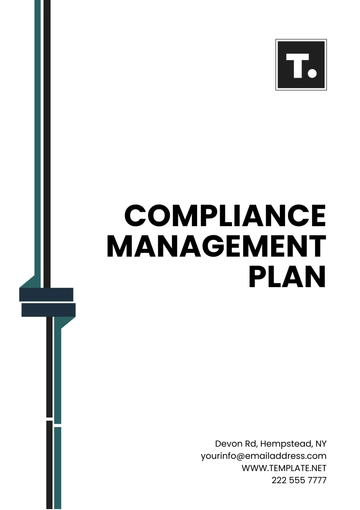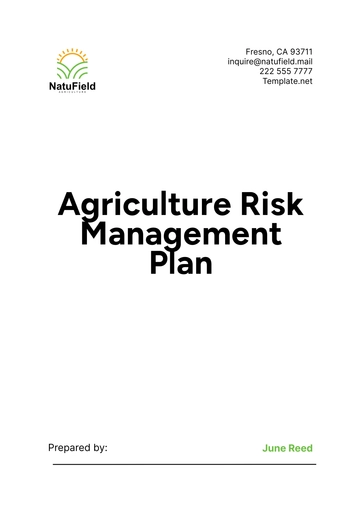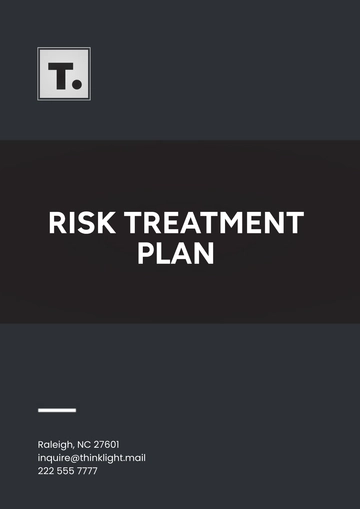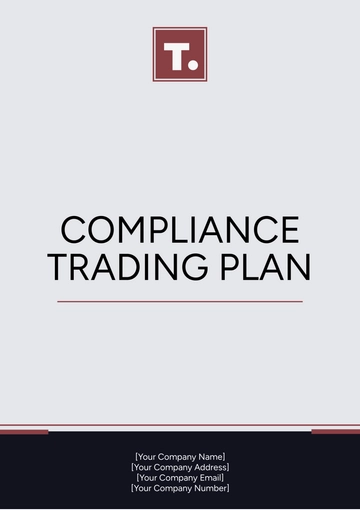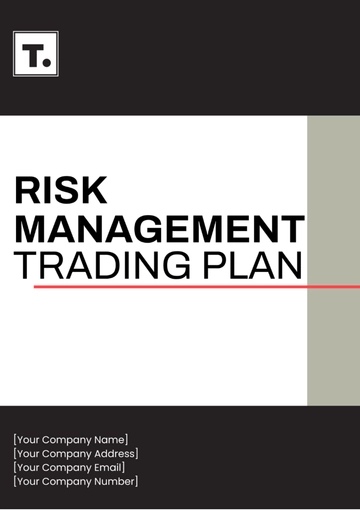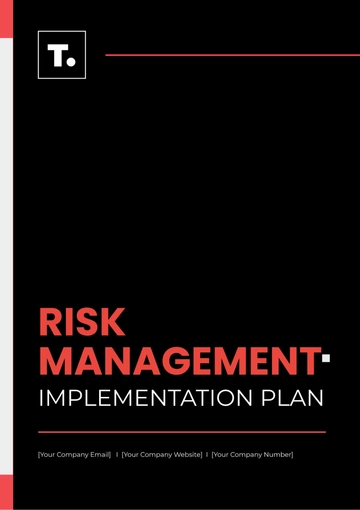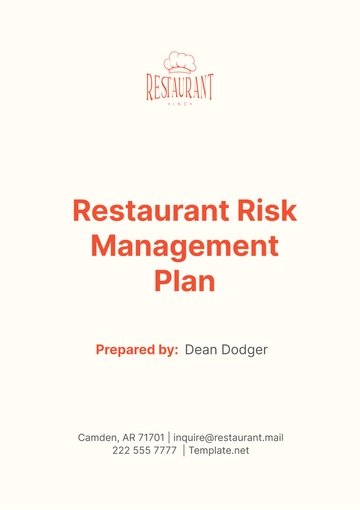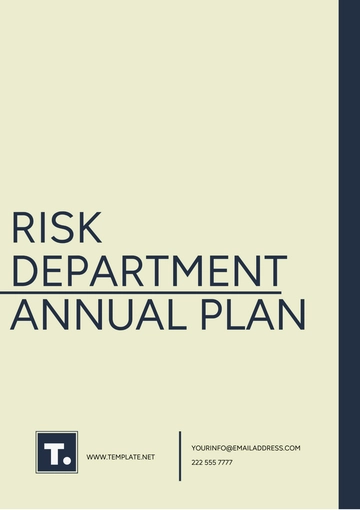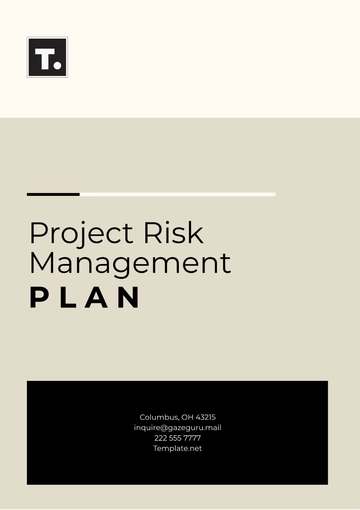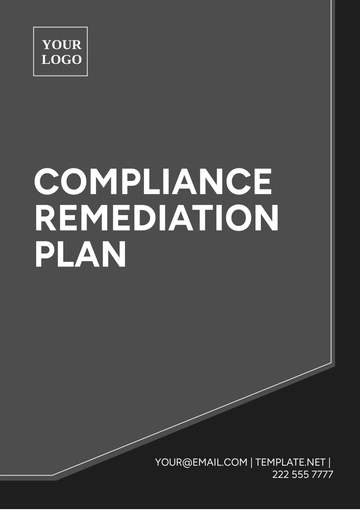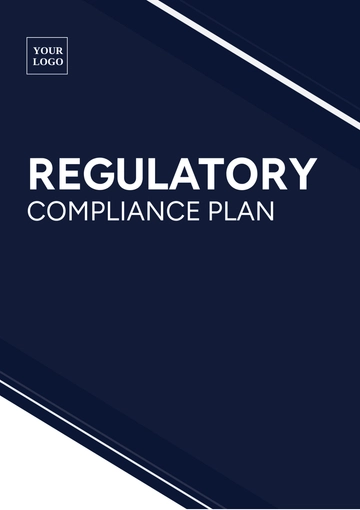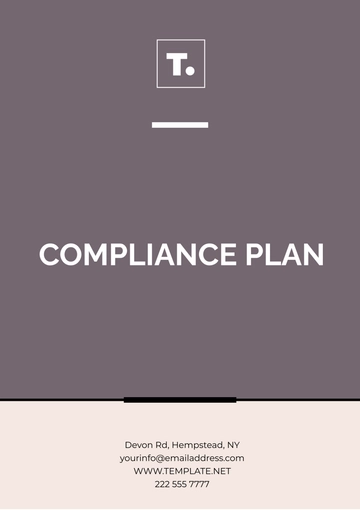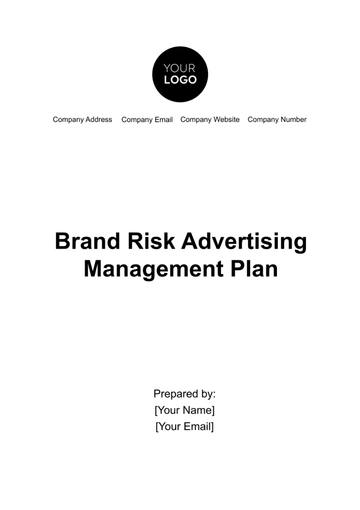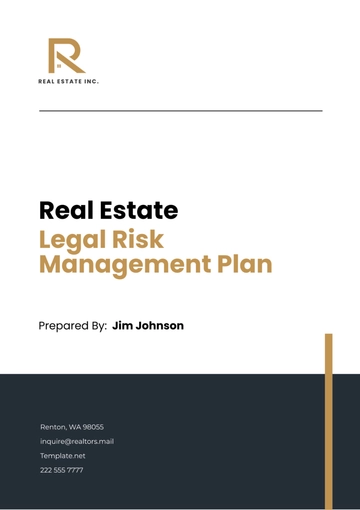Free Social Media Marketing Risk Management Plan
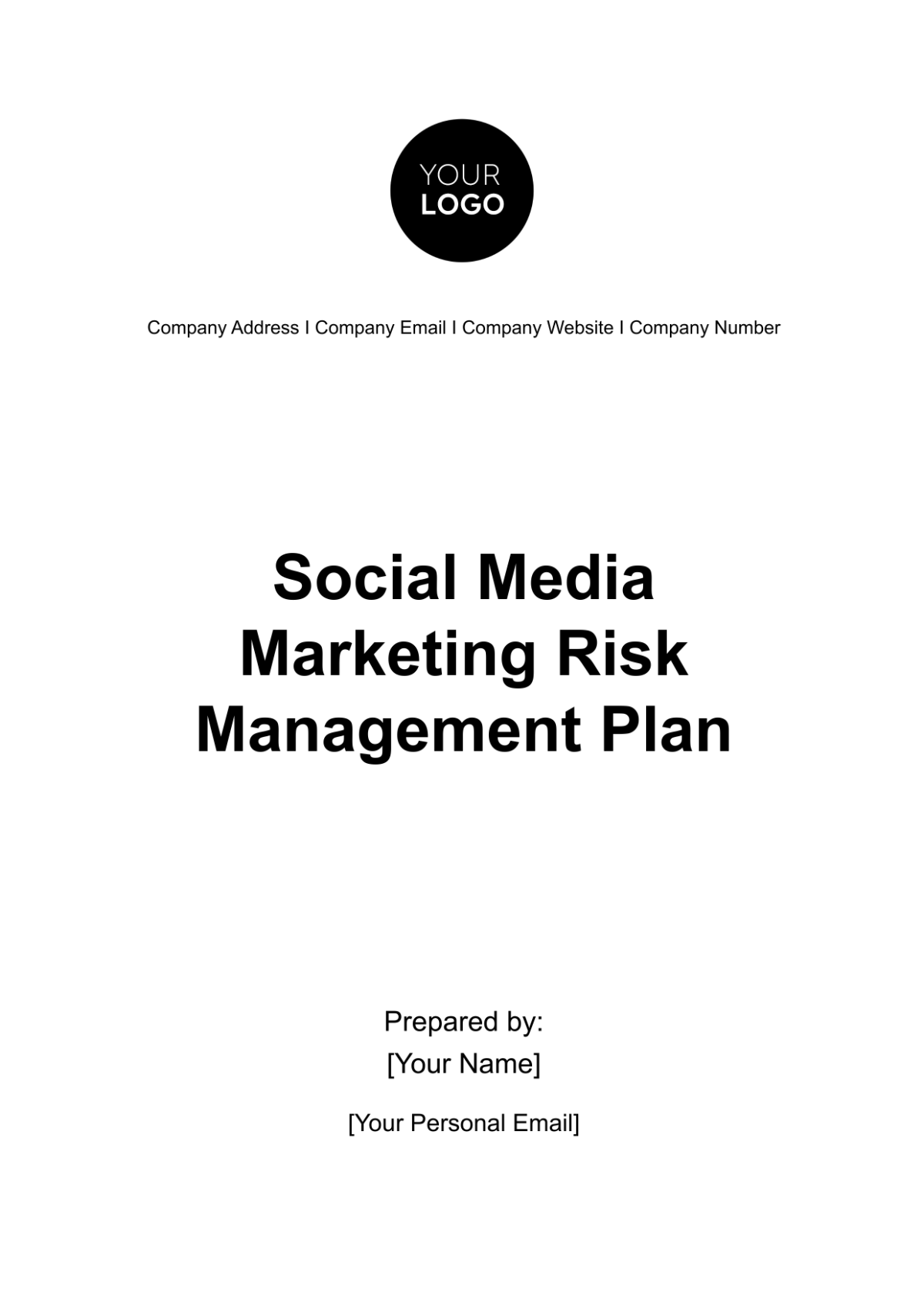
1. Introduction
This Social Media Marketing Risk Management Plan serves as a comprehensive guide for understanding and addressing the diverse set of risks associated with the social media marketing activities of [Company Name]. Carefully crafted to ensure a multi-faceted approach, this document focuses on the identification of potential pitfalls, ranging from reputational and legal risks to financial and operational hazards. By evaluating the likelihood and potential impact of each risk, we aim to assess the level of threat posed to the organization. Subsequently, this assessment leads to the formulation of robust mitigation strategies tailored to preemptively counter these identified risks.
The overarching goal of this plan is to secure both the reputation and operational integrity of the business by implementing checks, measures, and contingency plans that align with best practices and compliance requirements. This endeavor requires a cross-functional effort, engaging stakeholders from marketing, legal, finance, and IT departments to collaborate effectively.
Prepared By: [Your Name]
Contact Details: [Contact Information]
Date: [Date]
Through this comprehensive framework, [Your Company Name] aspires to conduct its social media marketing activities in a manner that not only achieves business objectives but also stands resilient in the face of potential challenges and crises.
2. Objectives
The primary goal of this Social Media Marketing Risk Management Plan is to create a structured framework that allows [Your Company Name] to effectively manage and mitigate the various risks associated with its social media marketing initiatives. Achieving this goal requires a multi-pronged approach, segmented into four main objectives as outlined below:
Objective 1: To Identify Potential Risks Associated with Social Media Marketing Activities
The first step in establishing a robust risk management framework is the identification of all conceivable risks tied to our social media marketing efforts. This includes reputational risks, such as negative publicity, legal risks like copyright infringement, and financial risks, such as budget overruns. By systematically cataloging these risks, we create a foundation upon which to build our subsequent risk management activities.
Objective 2: To Assess the Likelihood and Impact of These Risks
Once risks have been identified, the next critical phase involves evaluating the probability and potential consequences of each risk occurring. This is achieved through a comprehensive risk assessment matrix that rates the likelihood and impact of each identified risk. The aim is to prioritize risks, enabling us to allocate resources and focus on the most pressing concerns that could significantly impact the business.
Objective 3: To Develop and Implement Mitigation Strategies
After the risks have been identified and assessed, the development of mitigation strategies comes into play. These strategies are specifically designed actions or protocols that aim to reduce the likelihood or lessen the impact of the identified risks. Whether it's implementing a content approval process to avoid negative publicity or strengthening security measures to prevent data breaches, effective mitigation strategies are crucial for risk management.
Objective 4: To Establish a Monitoring and Review Process
Finally, risk management is not a one-off task but an ongoing process. It's imperative to establish a systematic monitoring and review mechanism to ensure that the mitigation strategies are effective and to identify any new risks that may have emerged. This involves regular reporting, performance metrics analysis, and periodic reassessment of risks to ensure that our risk management plan remains current and effective in safeguarding the reputation and operational integrity of [Your Company Name].
3. Scope
The scope of this Social Media Marketing Risk Management Plan is intended to be comprehensive, encompassing all facets of social media marketing activities carried out by [Company Name]. Below are the specific areas covered, each described in greater detail:
Content Creation and Publication. The act of creating and publishing content on social media platforms is fundamental to any marketing strategy. This includes posts, videos, articles, and other forms of media that are disseminated through various social media channels. The risks in this area may include, but are not limited to, inappropriate content, misrepresentation of facts, or accidental sharing of confidential information. By including this aspect in our scope, we aim to identify and manage all potential risks tied to the content that our company produces and shares online.
Audience Engagement. Engaging with the audience is crucial for brand building and customer loyalty. This involves responding to comments, direct messages, mentions, and other forms of online interaction with the public. Risks here may include poor or slow responses, unintentional commitment to false claims, and the escalation of customer complaints in a public forum. Through this plan, we aim to standardize and risk-proof the way our team interacts with audiences across all social media platforms.
Online Advertising. Paid promotions and advertisements on social media are key to expanding reach and driving business objectives. However, they come with their own set of risks such as advertising fraud, data breaches, and potentially violating platform-specific guidelines or legal regulations. This plan aims to scrutinize the risks involved in deploying online advertisements and to implement policies that ensure we are in compliance with all regulations and best practices.
Influencer Collaborations.
Partnering with influencers can amplify brand messages but also poses specific risks. These may include misalignment with the brand, false or exaggerated claims by the influencer, and potential contractual issues. By incorporating influencer collaborations into the scope of this plan, we aim to mitigate such risks through careful selection, contractual safeguards, and ongoing monitoring of influencer activity related to our brand.
In summary, this plan is designed to provide a robust framework that covers all social media marketing activities undertaken by [Company Name], to ensure that we are prepared for, and can effectively respond to, any risks that may arise.
4. Risk Identification
The Risk Identification chapter serves as the cornerstone of this Social Media Marketing Risk Management Plan for [Your Company Name]. The purpose of this section is to explicitly pinpoint the types of risks that the company may encounter in its social media marketing initiatives. These risks are categorized under four primary headings: Reputational, Legal, Financial, and Operational.
Each risk category contains a list of specific risks along with their probable causes. For instance, under the 'Reputational' category, 'Negative Publicity' is a highlighted risk, often caused by inappropriate content or poorly managed audience interactions. Similarly, risks such as 'Copyright Infringement,' 'Budget Overrun,' and 'Data Breach' are discussed under their respective categories of Legal, Financial, and Operational risks.
By thoroughly identifying these potential pitfalls, we lay the groundwork for the subsequent phases of risk assessment and mitigation. Recognizing the kinds of challenges we might face allows us to proactively design strategies to avoid or minimize their impact, thereby preserving the integrity and reputation of [Your Company Name]'s social media marketing efforts.
Risk Category | Specific Risk | Cause |
Reputational | Negative Publicity | Inappropriate content or response |
Legal | Copyright Infringement | Use of copyrighted material without permission |
Financial | Budget Overrun | Poor planning or mismanagement |
Operational | Data Breach | Weak security measures |
5. Risk Assessment
Appendix A: Risk Assessment Matrix
Following the identification of various risks in the previous chapter, this section delves into the Risk Assessment phase. The objective here is to evaluate the identified risks in terms of their likelihood of occurrence, potential impact, and overall risk level. These factors are quantified and visualized in Appendix A through a Risk Assessment Matrix.
The matrix serves as a practical tool for understanding the priority of each risk, helping to inform both the allocation of resources and the urgency of mitigation actions. For example, risks like 'Negative Publicity,' which have both a medium likelihood and high impact, are tagged with a high-risk level. This suggests a need for immediate attention and robust countermeasures. Conversely, risks with lower likelihood and impact may warrant less immediate but nonetheless important preventive strategies.
By systematically assessing the landscape of risks, we are better equipped to develop targeted and effective mitigation plans that align with [Company Name]'s operational and reputational objectives.
Specific Risk | Likelihood | Impact | Risk Level |
Negative Publicity | Medium | High | High |
Copyright Infringement | Low | High | Medium |
Budget Overrun | Low | Medium | Low |
Data Breach | Low | High | Medium |
6. Risk Mitigation Strategies
Building on the foundation laid by the Risk Identification and Risk Assessment chapters, this section focuses on Risk Mitigation Strategies. The aim here is to outline specific, actionable steps that can be taken to either prevent or minimize the impact of the identified risks. Each risk is paired with a tailored mitigation strategy and the person responsible for its implementation.
For example, to combat the risk of 'Negative Publicity,' a content approval process is recommended, overseen by the [Social Media Manager]. Similarly, to address 'Copyright Infringement,' the [Content Creator] is tasked with ensuring that only licensed or original material is used. 'Budget Overrun' is mitigated through regular reviews of the budget and Key Performance Indicators (KPIs), spearheaded by the [Marketing Manager]. Lastly, 'Data Breach' risks are minimized through the employment of two-factor authentication and regular security audits, under the purview of the [IT Manager].
Through these targeted mitigation strategies, this chapter aims to provide [Your Company Name] with a practical roadmap for safeguarding its social media marketing activities against potential risks.
Specific Risk | Mitigation Strategy | Responsible Person |
Negative Publicity | Implement content approval process | [Social Media Manager] |
Copyright Infringement | Use only licensed or original material | [Content Creator] |
Budget Overrun | Regularly review budget and KPIs | [Marketing Manager] |
Data Breach | Two-factor authentication and regular audits | [IT Manager] |
7. Monitoring and Review
The final chapter of this Social Media Marketing Risk Management Plan addresses Monitoring and Review, a crucial ongoing process to ensure the efficacy and relevance of our risk management measures. The objective is to maintain an active oversight mechanism that continually checks the effectiveness of the deployed mitigation strategies and updates them as required. Three key activities make up this monitoring and review framework: Quarterly Risk Assessment, Monthly Budget Review, and Weekly Performance Metrics.
A. Quarterly Risk Assessment: To be conducted by [Risk Management Team]
Scheduled on a quarterly basis, this assessment aims to revisit and re-evaluate the risk landscape facing [Your Company Name]'s social media marketing efforts. Led by the [Risk Management Team], this activity ensures that new risks are identified, and existing ones are reassessed. The information gathered informs updates to the Risk Assessment Matrix and helps in the fine-tuning of mitigation strategies, thereby maintaining the plan's relevance and effectiveness.
B. Monthly Budget Review: To be conducted by [Financial Team]
Budget management is crucial to any marketing operation, and thus, a Monthly Budget Review is conducted by the [Financial Team]. The focus is on scrutinizing the allocation and usage of financial resources in social media marketing, identifying any budget overruns, and making requisite adjustments. This review aims to ensure that the marketing activities stay within the financial framework while effectively meeting the business objectives.
C. Weekly Performance Metrics: To be reviewed by [Marketing Team]
To keep a pulse on the real-time performance of social media marketing initiatives, the [Marketing Team] conducts a weekly review of key performance metrics. These could range from engagement rates to click-through rates and conversions. This ongoing monitoring allows for immediate adjustments in strategy and timely interventions, thereby optimizing the overall marketing effectiveness and minimizing potential risks.
Through a structured and periodic monitoring and review process, [Your Company Name] aims to sustain a dynamic and resilient risk management framework that adapts to evolving challenges and opportunities in social media marketing.
8. Emergency Response Plan
In the event of a severe crisis—be it a major data breach, a viral negative publicity incident, or other high-impact events that pose immediate risks—it is imperative to act swiftly and decisively to mitigate damage and safeguard [Your Company Name]'s reputation and operations. To facilitate rapid response in such critical situations, this Social Media Marketing Risk Management Plan includes an Emergency Contact List, provided in Appendix B. This list outlines the designated individuals and teams who are authorized and trained to manage crises, along with their contact information for immediate reach. These stakeholders are equipped with predefined protocols and action plans to handle emergencies effectively, from internal coordination and external communication to legal consultation and technical intervention. The Emergency Response Plan serves as a last-resort safety net, designed to kick into action when standard risk mitigation strategies are insufficient for containing a severe issue. By having this plan in place, [Your Company Name] aims to ensure that even in the most challenging circumstances, the organization is prepared to act in a manner that minimizes damage and facilitates quick recovery.
9. Roles and Responsibilities
The effectiveness of this Social Media Marketing Risk Management Plan relies on clearly defined roles and responsibilities for key personnel within [Your Company Name]. Below is a table outlining these roles along with their respective responsibilities:
Role | Responsibility |
CEO | Final approval of the plan |
Marketing Manager | Overall implementation and monitoring |
Social Media Manager | Day-to-day risk management |
IT Manager | Data security and emergency response |
Legal Advisor | Legal compliance and advice |
By designating these roles and responsibilities, we aim to ensure that each phase of the risk management process is executed effectively and that there is a clear line of accountability within the organization.
10. Appendices
Appendix A: Risk Assessment Matrix
(See Chapter 5)
Appendix B: Emergency Contact List
Name | Role | Contact Details |
[Name] | CEO | [Contact] |
[Name] | Marketing Manager | [Contact] |
[Name] | IT Manager | [Contact] |
[Name] | Legal Advisor | [Contact] |
Appendix C: Scheduled Review Dates
Review Type | Date |
First Review | [Date] |
Second Review | [Date] |
Third Review | [Date] |
- 100% Customizable, free editor
- Access 1 Million+ Templates, photo’s & graphics
- Download or share as a template
- Click and replace photos, graphics, text, backgrounds
- Resize, crop, AI write & more
- Access advanced editor
This Social Media Marketing Risk Management Plan Template is a comprehensive, ready-to-use guide designed to help businesses proactively manage the various risks associated with their social media activities. Covering risk identification, assessment, mitigation strategies, and monitoring, this template offers a structured approach to safeguard your brand's reputation and operations. Ideal for marketing managers, CEOs, and social media teams seeking a robust risk management framework.
You may also like
- Finance Plan
- Construction Plan
- Sales Plan
- Development Plan
- Career Plan
- Budget Plan
- HR Plan
- Education Plan
- Transition Plan
- Work Plan
- Training Plan
- Communication Plan
- Operation Plan
- Health And Safety Plan
- Strategy Plan
- Professional Development Plan
- Advertising Plan
- Risk Management Plan
- Restaurant Plan
- School Plan
- Nursing Home Patient Care Plan
- Nursing Care Plan
- Plan Event
- Startup Plan
- Social Media Plan
- Staffing Plan
- Annual Plan
- Content Plan
- Payment Plan
- Implementation Plan
- Hotel Plan
- Workout Plan
- Accounting Plan
- Campaign Plan
- Essay Plan
- 30 60 90 Day Plan
- Research Plan
- Recruitment Plan
- 90 Day Plan
- Quarterly Plan
- Emergency Plan
- 5 Year Plan
- Gym Plan
- Personal Plan
- IT and Software Plan
- Treatment Plan
- Real Estate Plan
- Law Firm Plan
- Healthcare Plan
- Improvement Plan
- Media Plan
- 5 Year Business Plan
- Learning Plan
- Marketing Campaign Plan
- Travel Agency Plan
- Cleaning Services Plan
- Interior Design Plan
- Performance Plan
- PR Plan
- Birth Plan
- Life Plan
- SEO Plan
- Disaster Recovery Plan
- Continuity Plan
- Launch Plan
- Legal Plan
- Behavior Plan
- Performance Improvement Plan
- Salon Plan
- Security Plan
- Security Management Plan
- Employee Development Plan
- Quality Plan
- Service Improvement Plan
- Growth Plan
- Incident Response Plan
- Basketball Plan
- Emergency Action Plan
- Product Launch Plan
- Spa Plan
- Employee Training Plan
- Data Analysis Plan
- Employee Action Plan
- Territory Plan
- Audit Plan
- Classroom Plan
- Activity Plan
- Parenting Plan
- Care Plan
- Project Execution Plan
- Exercise Plan
- Internship Plan
- Software Development Plan
- Continuous Improvement Plan
- Leave Plan
- 90 Day Sales Plan
- Advertising Agency Plan
- Employee Transition Plan
- Smart Action Plan
- Workplace Safety Plan
- Behavior Change Plan
- Contingency Plan
- Continuity of Operations Plan
- Health Plan
- Quality Control Plan
- Self Plan
- Sports Development Plan
- Change Management Plan
- Ecommerce Plan
- Personal Financial Plan
- Process Improvement Plan
- 30-60-90 Day Sales Plan
- Crisis Management Plan
- Engagement Plan
- Execution Plan
- Pandemic Plan
- Quality Assurance Plan
- Service Continuity Plan
- Agile Project Plan
- Fundraising Plan
- Job Transition Plan
- Asset Maintenance Plan
- Maintenance Plan
- Software Test Plan
- Staff Training and Development Plan
- 3 Year Plan
- Brand Activation Plan
- Release Plan
- Resource Plan
- Risk Mitigation Plan
- Teacher Plan
- 30 60 90 Day Plan for New Manager
- Food Safety Plan
- Food Truck Plan
- Hiring Plan
- Quality Management Plan
- Wellness Plan
- Behavior Intervention Plan
- Bonus Plan
- Investment Plan
- Maternity Leave Plan
- Pandemic Response Plan
- Succession Planning
- Coaching Plan
- Configuration Management Plan
- Remote Work Plan
- Self Care Plan
- Teaching Plan
- 100-Day Plan
- HACCP Plan
- Student Plan
- Sustainability Plan
- 30 60 90 Day Plan for Interview
- Access Plan
- Site Specific Safety Plan
